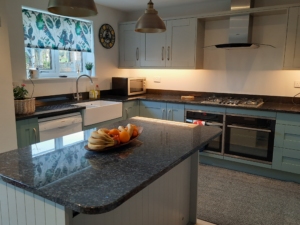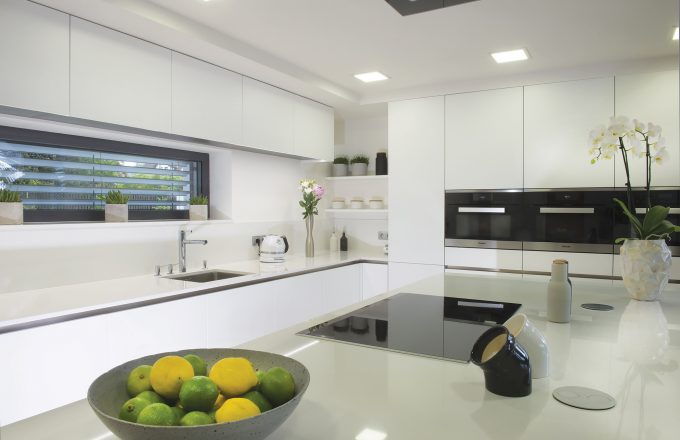
How to choose a Kitchen Worktop
If you have no idea what material, colour and pattern you want, then choosing a kitchen worktop can be quite frustrating. We offer a wide selection of various materials and many different patterns.
While choosing a pattern and colour is mostly subjective and a matter of personal choice, choosing the material depends on pure physics. This post explains various properties of different materials and their suitability for kitchens, floors, bathrooms and facades.
Not all materials are created equal!
Worktop materials can vary widely due to their properties. Some materials are more porous or absorbent (marble) and others are more rigid (ceramics). The respective properties of a material for a worktop determine where it should be used.
A kitchen worktoptop is a place for cooking. This means that it is exposed to various substances, such as water, salt, minerals, acids and other substances that can stain it. If the worktop is not properly maintained and is of a porous material, stains can absorb into it. The most absorbent materials are marble and light granite.
Properties according to materials
The following table provides a simplified overview of basic properties of materials. When you are about to choose stone for your kitchen, bathroom, floor or facade, it is good to use the table as a guide.
| Dark granite | Light granite | Quartz | Ceramics | Marble | |
| Hardness/rigidity | 7 | 6 | 6-7 | 8 | 4-6 |
| Resistance to staining | Very good | Good | Very good | Very good | Low – good |
| Resistance to scratching | Very good | Very good | Very good | Excellent | Low |
| Resistance to heat | Very good | Very good | Good | Excellent | Good |
| Absorption | Low absorbency | Absorbent | Very low absorbency | Very low absorbency | Absorbent |
| Porosity (%) | 0-0.2 | 0.2-0.5 | 0.01 | 0.01 | 0.3-0.5 |
Next, we take a closer look at various stone materials and compare their advantages and disadvantages. As a manufacturer, it is our duty to bring forth a material’s weaknesses, not only its strengths.
Granite – dark and light granites have different properties
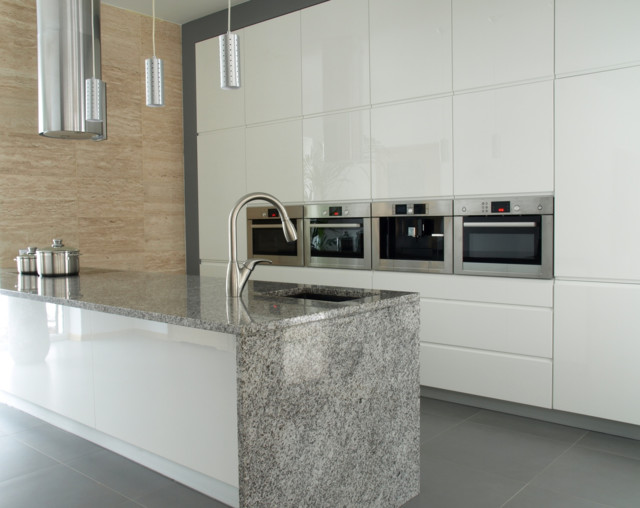
Advantages: Decorative, heat-resistant, pattern and shade vary.
Disadvantages: Light granite is somewhat more absorbent than dark granite.
Suitable for use: In kitchens and bathrooms, on facades and floors.
Granite is a volcanic rock formed from cooled magma. Due to its natural origin, granite has a unique color, and the shade and pattern of each individual formation is one of a kind. Although light granite is slightly more absorbent than dark granite, both are suitable for use anywhere in the household – in kitchens and bathrooms, on facades and for floors.
Due to its volcanic origin, it is extremely resistant to high temperatures. Because it has good resistance to heat and cold, granite is a perfect material for kitchens – you can place hot pans, saucepans and ovenware straight on the worktop!
A granite worktop is easy to clean. Generally, it is sufficient to wipe it clean with a damp cloth. However, in the case of light granite, marble cleaning products should be applied once or twice a year. Polishing with a clean, dry towel gives the best results in daily cleaning.
Marble – super decorative but absorbent material
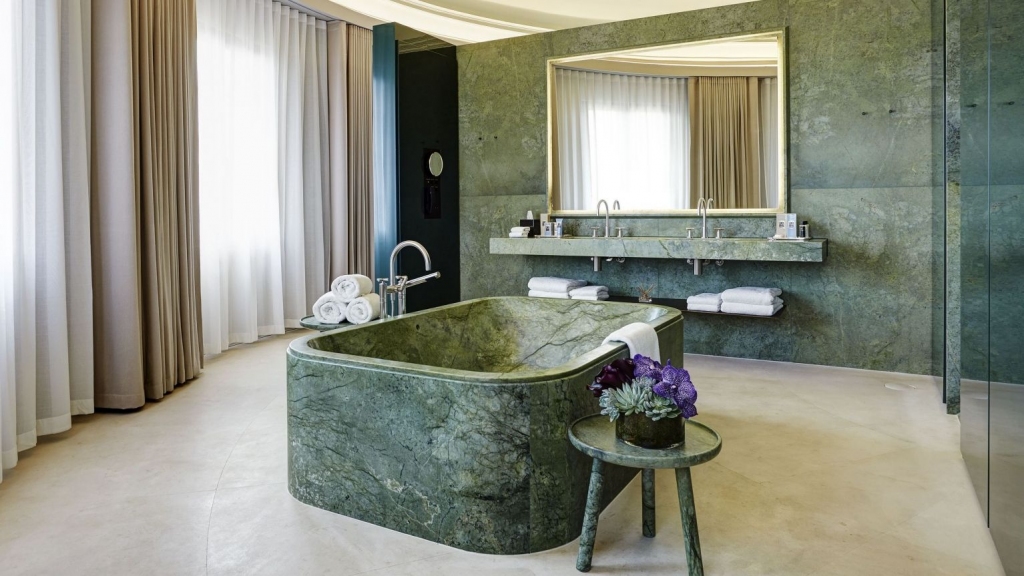
Advantages: super decorative, with a unique pattern; pattern and shade vary.
Disadvantages: readily absorbs liquids, is easily scratched, discolors, oil and grease leave stains on it; pattern and shade vary; you must take the presence of natural defects into consideration.
Suitable for use: perfect in bathrooms and on facades, less suitable for kitchens.
Not recommended for use: in kitchens under intensive use.
For those who love natural white rock, marble is an obvious choice. Natural marble, however, is more suitable for use in bathrooms and on facades.
A marble worktop requires great caution and extensive care. As marble is softer and more porous than granite, it is easily scratched and stained. Particular caution is required when handling substances, such as red wine, coffee, tea, oils and juices. To avoid liquids from being absorbed by marble, always use coasters when placing cups and glasses on the worktop. Also, direct contact with acidic fruit may damage the surface/color of marble.
With good care, marble can stay beautiful for years, even in the kitchen. Acidic agents should be avoided in the daily cleaning of marble.
Quartz – does not tolerate sudden heat
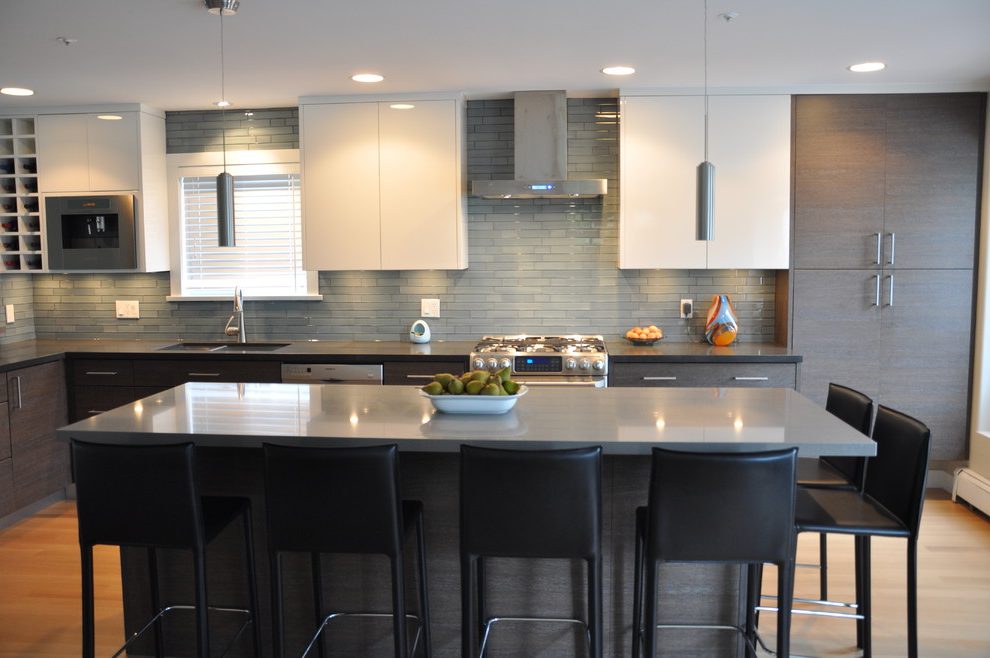
Advantages: a wide choice of colors, decorative, pattern and shade vary less compared to granite and marble; a good alternative to marble because it has no natural defects; you can order a sink of the same material.
Disadvantages: does not tolerate high heat nor direct UV light.
Suitable for use: in kitchens and bathrooms, on floors.
Not recommended to use: on facades.
Quartz is an industrially-produced material, the absorbance of which is reduced almost to a minimum. One of the main advantages of quartz is its uniform structure and a wide selection of colors that allow for a personalized kitchen design.
Quartz does not tolerate high heat, so using trivets is highly recommended. But in general, quartz worktops are easy to maintain. When used indoors, polished surfaces do not require special impregnation. To clean quartz surfaces, use warm water and soap; to polish, a clean dry towel is the best.
Ceramic worktops – resistant to heat and scratching

Advantages: decorative, resistant to weather, boards have an identical pattern; a good alternative to marble because it has no natural defects. High resistance to heat.
Disadvantages: very rigid, does not tolerate the direct impact
Suitable for use: in kitchens and bathrooms, on facades and floors
Ceramic is an industrially-produced material that consists of natural components. Ceramic worktops have exceptionally good resistance to scratching as well as heat and liquid damage, so they require minimum care. Their rigidity is the only disadvantage of ceramic materials. Upon the occurrence of a strong and direct impact, the ceramic material may crack. Therefore, the use of ceramics in places where very heavy objects need to be placed is not recommended.
Summary
To summarize, when choosing a worktop you should draw on your experience. In other words, how have you previously been using your kitchen and bathroom? If you cook a lot of food, and you use many ingredients that could leave stains, then natural marble is not the obvious choice. Marble may, however, be a solid and exclusive solution for your bathroom.
Each material has its pros and cons. Use this article and the links to our materials as notes, so you can pick a kitchen worktop and a solution that fits you the best. We also recommend that you reach out to one of our sales representatives, who are always there to help you well on your way.
Please do not hesitate to request a free price quote on the materials you are interested in!
